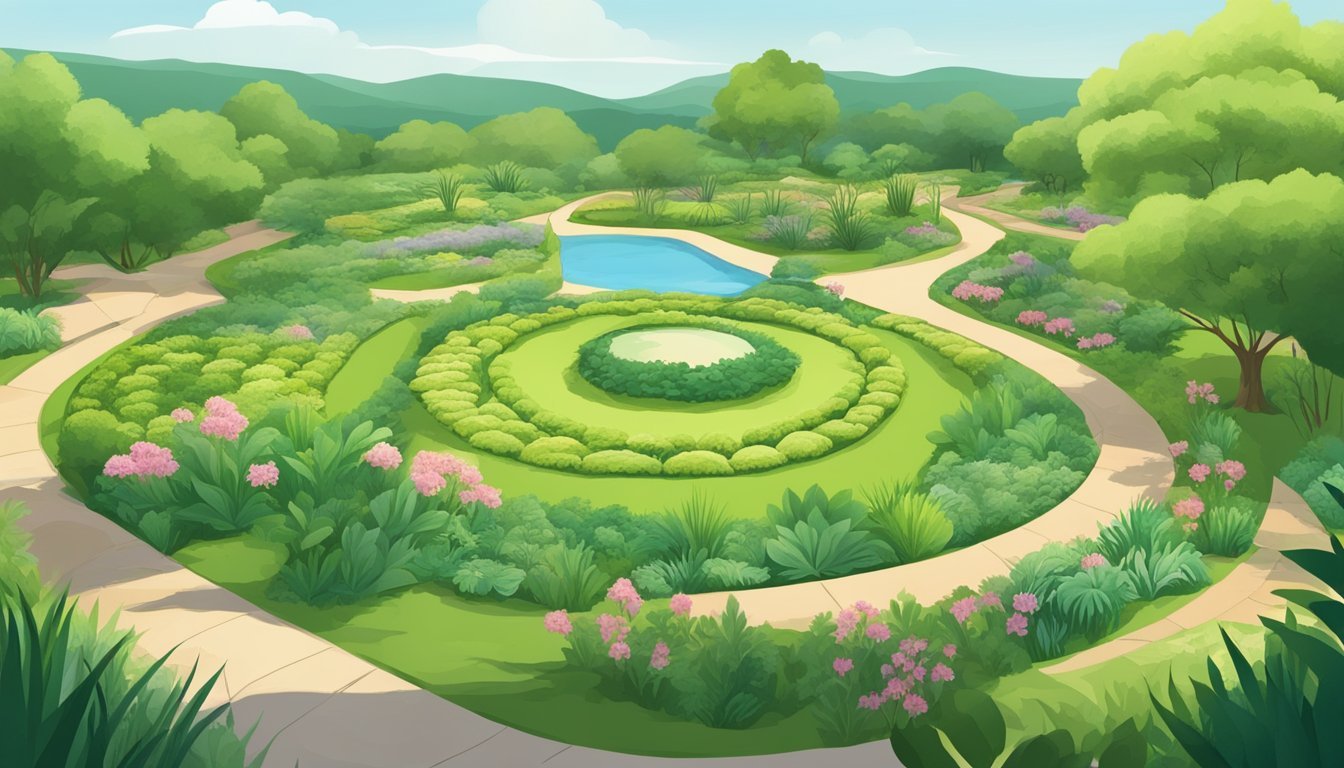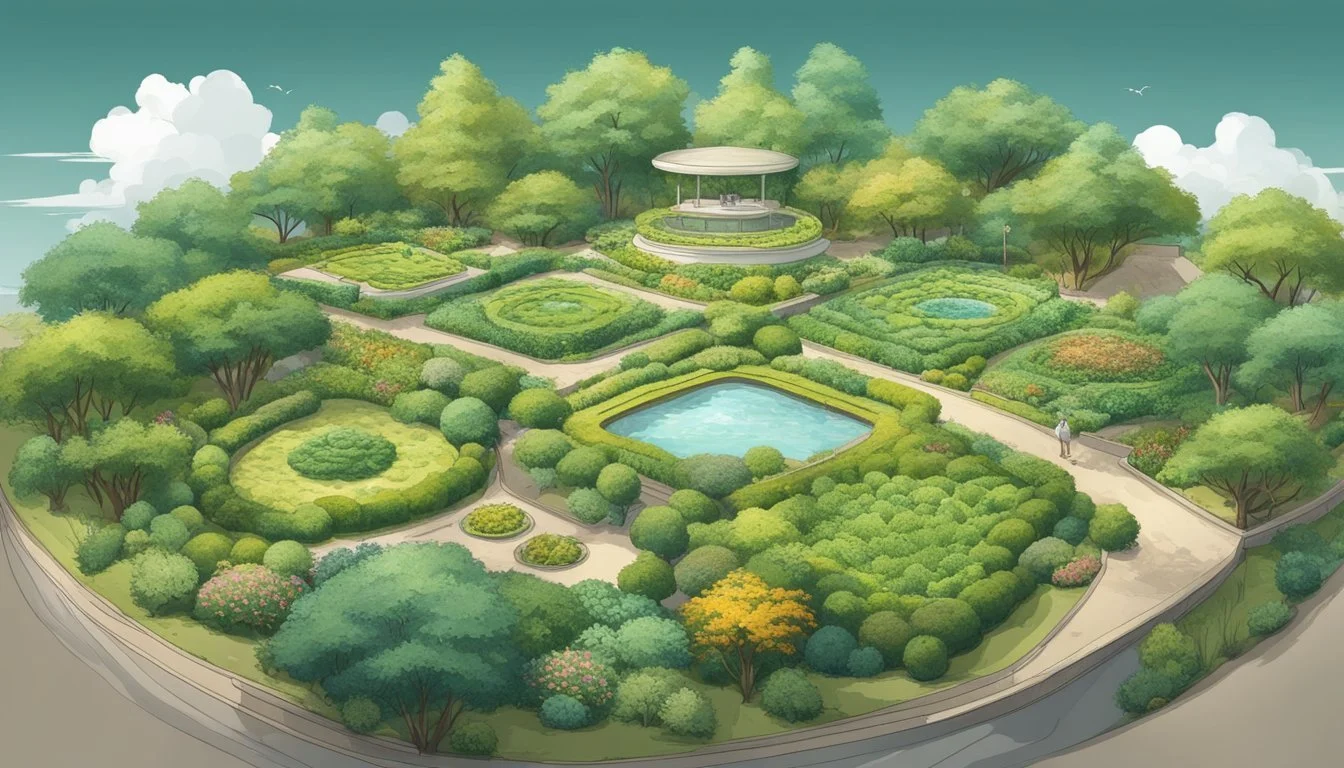Free Land for Botanical Gardens
Cultivating Rare Plants Explored
Many botanical gardens around the world are expanding their efforts to conserve rare and endangered plants. Cultivating these species often requires substantial resources, including land. Providing free land for botanical gardens can significantly enhance their ability to cultivate and protect rare plants. Access to more space enables these gardens to house and nurture a wider variety of species under threat.
The U.S. Botanic Garden, for example, maintains thousands of plant species, including economic plants, medicinal plants, and orchids. Free land would allow such institutions to expand their collections and engage in more extensive research and conservation projects. This is crucial for the survival of numerous globally rare North American plant species, many of which are already part of conservation collections within botanic gardens.
Moreover, large-scale conservation efforts, like those undertaken by the Center for Plant Conservation, highlight the importance of safeguarding rare plants through "ex situ" collections such as seed banks and nurseries. By offering free access to additional land, communities and governments can play a pivotal role in the conservation of these imperiled native plants, ensuring their survival for future generations.
The Significance of Botanical Gardens
Botanical gardens play a crucial role in plant conservation and offer numerous educational opportunities. These gardens help protect biodiversity and foster public awareness about the importance of plant life.
Conservation and Biodiversity
Botanical gardens serve as vital sanctuaries for the preservation of plant species, especially those facing extinction. They maintain ex situ collections, where plants are grown in a controlled environment outside their natural habitats. This helps safeguard genetic diversity and enables future reintroduction into the wild.
Herbarium specimens and living collections are extensively used to study plant responses to environmental changes. By cultivating rare and endangered plants, botanical gardens contribute to global plant conservation efforts. They help restore degraded ecosystems and support in situ conservation strategies. Collaborative efforts with national and international conservation programs amplify their impact on preserving biodiversity.
Educational Role and Public Engagement
Botanical gardens offer significant educational benefits by providing a living classroom for students, researchers, and the general public. They organize workshops, guided tours, and interactive exhibits that enhance understanding of plant biology, conservation, and the ecological importance of plants.
Public engagement initiatives foster greater appreciation for plant life and biodiversity. Educational programs aimed at all age groups encourage sustainable practices and highlight the significance of plant conservation. By involving communities, botanical gardens promote environmental stewardship and inspire future generations to protect our planet's natural resources.
Preservation of Rare Plants
Preserving rare plants requires identifying and categorizing species, employing diverse conservation strategies, and utilizing seed banks for ex situ conservation to ensure their survival. Each of these methods plays a critical role in maintaining genetic diversity and preventing extinction.
Identifying and Categorizing Rare Species
Accurate identification and categorization of rare plants are essential for effective conservation. Conservationists use criteria such as population size, distribution, and rate of decline to classify species. Lists like the IUCN Red List help track endangered plant status worldwide. By identifying rare plants, scientists can prioritize conservation efforts and ensure that the most imperiled species receive necessary protection and resources.
Strategies for Plant Preservation
Various strategies are employed to preserve rare plants. In situ conservation involves protecting plants in their natural habitats through the creation of reserves and legal protections. Ex situ conservation includes methods like seed banking, cultivating plants in botanical gardens, and using tissue culture techniques. These strategies help maintain genetic diversity and offer fallback options if natural habitats are compromised.
The Role of Seed Banks and Ex Situ Conservation
Seed banks play a vital role in ex situ conservation by storing seeds of rare and endangered plants. This approach preserves genetic material and provides a reservoir for future restoration projects. Botanical gardens also contribute by maintaining living conservation collections and growing rare species in controlled environments. These measures ensure the survival of plant species that might otherwise face extinction.
Botanical gardens and seed banks collectively safeguard thousands of rare plant species, ensuring that genetic diversity is maintained for future generations.
Challenges in Plant Conservation
Efforts to conserve plant diversity face several significant challenges. These include the destruction of natural habitats, adverse impacts of climate change, and various legal and economic barriers.
Loss of Habitat and Biodiversity
One of the primary threats to plant conservation is habitat loss. Rapid urbanization, deforestation, and agricultural expansion are the main drivers behind the destruction of natural habitats. When habitats are lost, plants that are uniquely adapted to specific environments often face extinction.
Loss of biodiversity is another critical issue. Reduced genetic diversity within plant species can weaken ecosystems' resilience. This makes it harder to recover from disturbances such as disease outbreaks or changes in climate.
Climate Change and Its Impacts
Climate change poses a severe threat to plant conservation. Shifts in temperature and precipitation patterns can disrupt the growth cycles of rare and endangered plants. Extinction rates may increase as species struggle to adapt to rapidly changing conditions.
Extreme weather events—such as droughts, floods, and storms—can cause sudden and irreversible habitat destruction. These events further limit the survival chances of already threatened species.
Furthermore, altered climate conditions often favor invasive species, which can outcompete and displace native plants, leading to further biodiversity loss.
Legal and Economic Barriers
Legal and economic barriers also hinder plant conservation efforts. In many regions, national legislation and international treaties related to biodiversity conservation are poorly enforced or lack coherence. This creates gaps in protection and allows for continued habitat destruction.
Economic constraints are another significant challenge. Funding for conservation programs is often limited, making it difficult for botanical gardens and other institutions to maintain and expand their ex situ conservation efforts. Economic pressures can also drive unsustainable land use practices, further degrading natural habitats.
Logging, mining, and agricultural industries often operate with minimal restrictions, exacerbating the loss of vital plant habitats. Without significant changes to legal frameworks and economic incentives, plant conservation efforts will continue to face uphill battles.
Role of Regional Botanic Gardens
Regional botanic gardens play a pivotal role in maintaining biodiversity and promoting environmental education. They work diligently to conserve native plants and garner community support for local ecosystem resilience.
Local Ecosystems and Native Plants
Regional botanic gardens significantly bolster local ecosystems by focusing on the conservation of native plants. Ensuring the survival of these plants supports biodiversity, which is crucial for maintaining healthy ecosystems. These gardens often partner with research institutions to study plant adaptations and resilience, particularly in North America where unique ecosystems like prairies and wetlands are under threat.
Such gardens also serve as living laboratories where rare and endangered plant species are nurtured. The U.S. Botanic Garden, for instance, has programs dedicated to the propagation of threatened native species. By reintroducing these plants into natural habitats, regional gardens play an essential role in local conservation efforts.
Community Involvement and Support
The success of regional botanic gardens hinges on strong community support. Through educational programs, workshops, and volunteer opportunities, these gardens engage local residents in conservation activities. Promoting awareness about the importance of native plants and ecosystems encourages community members to participate actively.
Public events, such as native plant sales and gardening workshops, provide resources and knowledge to foster sustainable practices at home. Regional botanic gardens also collaborate with schools to integrate environmental education into curricula, cultivating a new generation of conservation-conscious citizens.
By building a bridge between the public and the natural world, regional botanic gardens ensure enduring support for their initiatives aimed at preserving local biodiversity and ecosystems.
Global Collaborations for Plant Conservation
International cooperation among botanic gardens is crucial for the conservation of rare and endangered plants. Collaborative efforts like those by Botanic Gardens Conservation International, the Global Strategy for Plant Conservation, and the Center for Plant Conservation host diverse initiatives to safeguard plant biodiversity.
Botanic Gardens Conservation International (BGCI)
Botanic Gardens Conservation International (BGCI) serves as a global network that unites botanic gardens in their mission to preserve plant diversity. BGCI provides support through funding, education, and research programs.
Innovative Approaches to Cultivation and Stewardship
Efficiently cultivating and stewarding rare plants in botanical gardens involves a combination of cutting-edge propagation techniques, genetic studies for biodiversity maintenance, and sustainable gardening practices.
Propagation Techniques for Rare Plants
To preserve rare plants, botanical gardens employ advanced propagation techniques. These methods may include tissue culture, which allows for the growth of plants from small tissue samples. This technique aids in creating genetically diverse plant populations by propagating multiple specimens.
Another critical technique is seed banking. Seeds from wild populations are collected and stored under optimal conditions, ensuring the preservation of genetic material. In vitro propagation is another method used, where plant tissues are cultured in a controlled environment to produce new plants robustly.
Genetic Studies and Biodiversity Maintenance
Maintaining genetic diversity is crucial for the survival of rare species. Botanical gardens undertake genetic studies to understand the genetic makeup of plants. Techniques such as DNA fingerprinting help identify genetic variations within species, essential for breeding and conservation efforts.
These studies also involve monitoring genetic health over time. Gardens collaborate with universities and research institutions to conduct field studies and collect data from wild populations. This information is used to develop strategies aimed at preventing genetic erosion and ensuring long-term species survival.
Sustainable Gardening Practices
To support environmental stewardship, botanical gardens implement sustainable gardening practices. These practices include water conservation methods such as drip irrigation and rainwater harvesting. Soil health is maintained through composting and the use of organic fertilizers, reducing the need for chemical inputs.
Gardens also focus on creating habitats that support local wildlife. Planting native species and reducing the use of pesticides fosters biological diversity. Moreover, public education initiatives are conducted to promote sustainable gardening techniques among local communities, ensuring broader environmental impact.
Supporting the Cause: Fundraising and Donation
Securing financial contributions and volunteer efforts is crucial for botanical gardens to thrive. Each method plays a significant role in ensuring the preservation and growth of these vital sanctuaries.
The Importance of Financial Contributions
Financial contributions are essential for the sustainability and expansion of botanical gardens. They enable various initiatives such as conservation programs, educational outreach, and research projects. Charitable giving can take many forms, including direct donations, endowments, or participating in legacy programs.
For instance, donors can contribute to specific projects like the preservation of rare plants or the creation of educational materials. Corporate sponsorships also play a significant role. Companies often sponsor garden areas, ensuring their upkeep while promoting environmental stewardship. These funds are instrumental in covering operational costs and facilitating garden improvements, which enhance the visitor experience.
Volunteering and Community Engagement
Volunteering is another vital component. Volunteers assist with gardening tasks, educational programs, and special events. This active community involvement reduces operational costs and fosters a sense of ownership and pride among local residents.
Community engagement activities such as workshops, guided tours, and family events help raise awareness and generate interest in conservation efforts. Membership programs also encourage ongoing support from local communities by offering benefits like free admission, members-only events, and discounts. These programs build a devoted network of supporters who contribute both time and financial resources.
By engaging the community and securing financial contributions, botanical gardens can continue to protect and nurture rare plant species while providing educational and recreational opportunities for all.
Milestones and Case Studies
Botanical gardens play a vital role in conserving rare plant species through various successful initiatives and landmark projects. Multiple milestones and case studies illustrate their impactful efforts.
Success Stories in Rare Plant Conservation
Botanic gardens have achieved commendable success in conserving rare plant species. For instance, the Keys Thatch Palm (Leucothrinax morrisii) has been successfully conserved at several botanical gardens like the Fairchild Tropical Botanic Garden in Florida. The gardens not only cultivate these rare plants but also ensure their genetic diversity is maintained through seed banks.
Another success story is the Chinese Academy of Sciences’ botanical gardens. Housing around 20,000 vascular plant species, these gardens have become a benchmark for ex situ conservation efforts worldwide.
The Rare Plant Academy and National Collections
The Rare Plant Academy has been instrumental in advancing the knowledge and techniques for plant conservation. This institution collaborates closely with the Center for Plant Conservation (CPC) to maintain the National Collection of Endangered Plants, ensuring that the most threatened species receive focused conservation efforts.
Botanical institutions within this network provide critical resources and expertise. They share data, propagate plants, and refine methodologies to improve survival rates both in gardens and potential reintroduction sites.
Special Events: CPC's 40th Anniversary Summit
The Center for Plant Conservation's (CPC) 40th Anniversary Summit was a landmark event celebrating decades of collaborative conservation. Held at the CPC National Office, the summit brought together conservationists, researchers, and policymakers to review past achievements and chart future directions.
Key presentations underscored milestones in plant conservation, highlighting efforts like the establishment of new seed banks and advanced propagation techniques. Attendees shared innovative methodologies and celebrated the collaborative spirit that drives the CPC's mission.
This event also emphasized the critical role of public engagement and education, urging botanical gardens to connect more deeply with their communities to foster a broader conservation ethic.
Looking to the Future
Botanical gardens play a critical role in conservation efforts and their importance continues to grow. Future advancements in botanical research and technology, the evolving role of botanic gardens, and long-term conservation goals will all shape their impact on the environment.
Advancements in Botanical Research and Technology
Innovative technologies are transforming botanical research. Genomic sequencing allows scientists to uncover the genetic makeup of rare and endangered plant species, aiding in their preservation. Additionally, advancements in biotechnology, such as CRISPR, provide tools to enhance plant resilience against climate change.
Automated monitoring systems and drones offer detailed insights into plant health and growth patterns. These technologies enable more precise care and conservation efforts. Investing in cutting-edge research is vital to address the complex challenges faced by rare plant species.
Forecasting the Role of Botanic Gardens
Botanic gardens are evolving from traditional plant displays to centers of dynamic conservation and education. They play a crucial role in seed banking, storing genetic material that can be used for future restoration projects. These gardens are also becoming community hubs, raising awareness and educating the public about conservation.
Collaborations between botanical gardens and environmental organizations will expand. By sharing expertise and resources, they can implement large-scale conservation projects. As climate change intensifies, these gardens will be at the forefront of efforts to protect plant diversity.
Long-Term Goals for Conservation
Botanical gardens must set ambitious long-term goals to ensure the survival of rare and endangered plants. One key objective is to increase the number of conserved species through integrated programs. These programs should combine in-situ and ex-situ conservation techniques, ensuring plants are preserved both within their natural habitats and under controlled conditions.
Establishing international networks will facilitate the exchange of seeds, research, and best practices. Partnerships with local communities and indigenous groups will be essential in maintaining biodiversity. Ensuring sustainable funding and policy support is crucial for the longevity of these conservation efforts.








